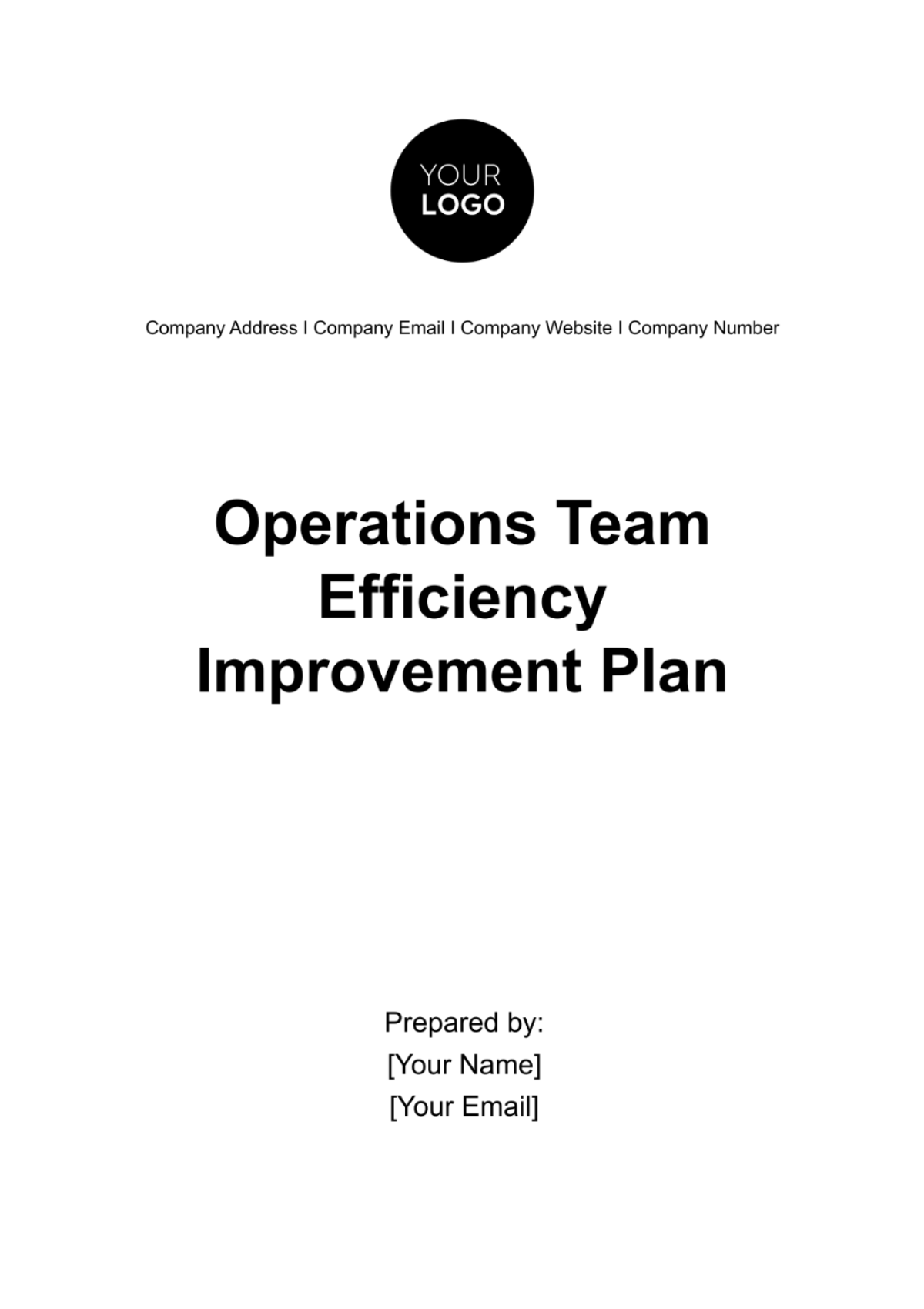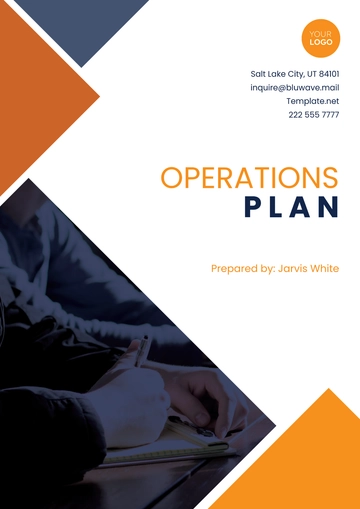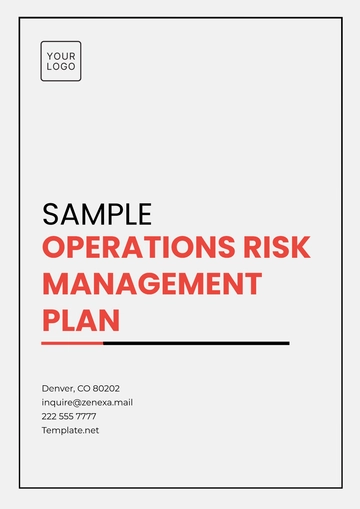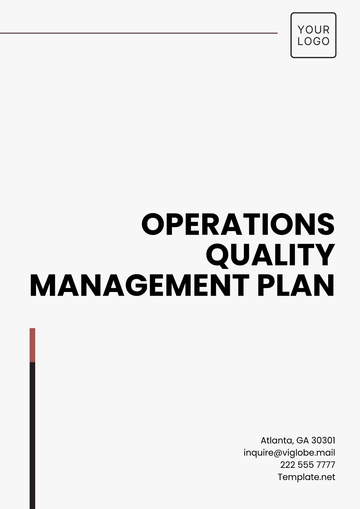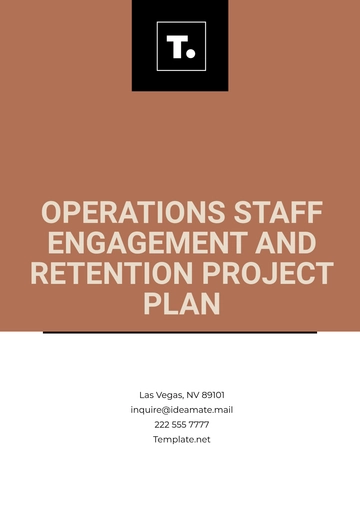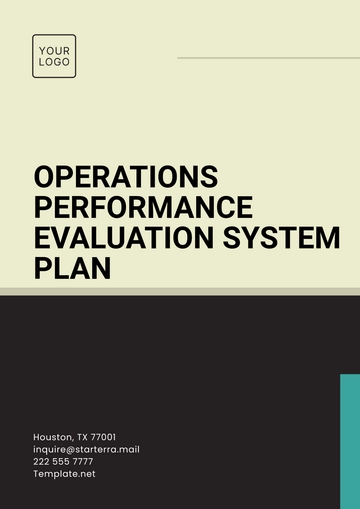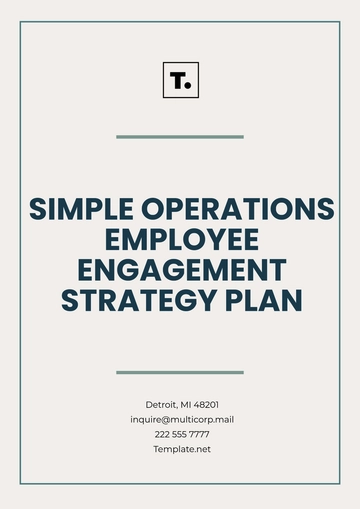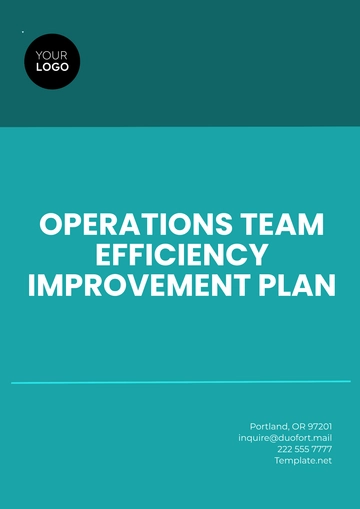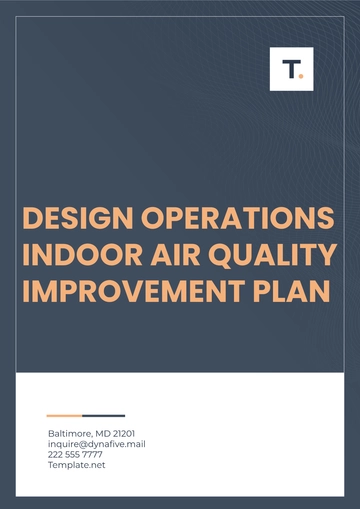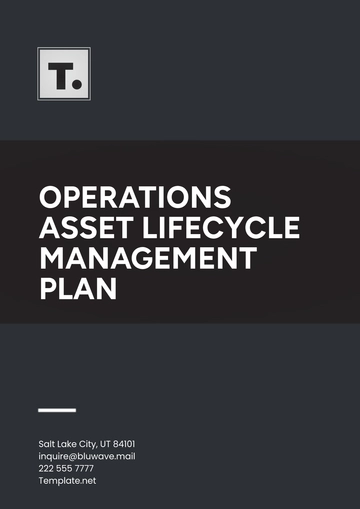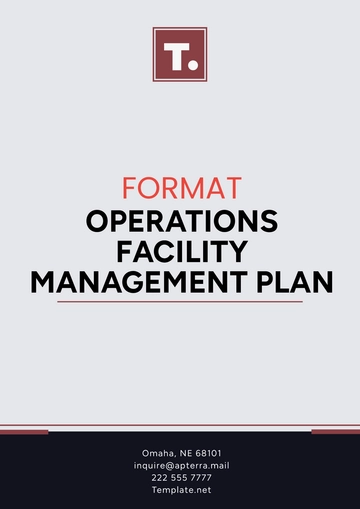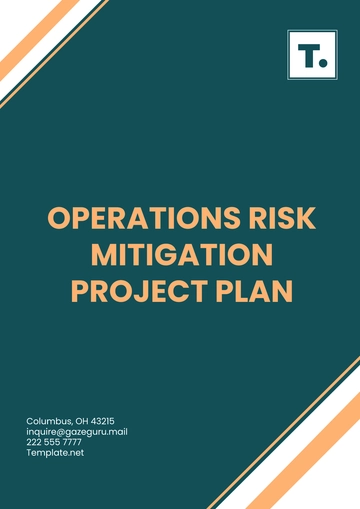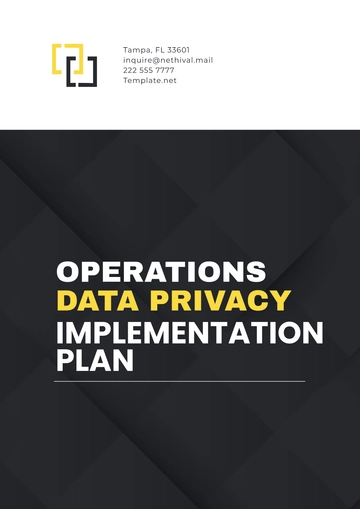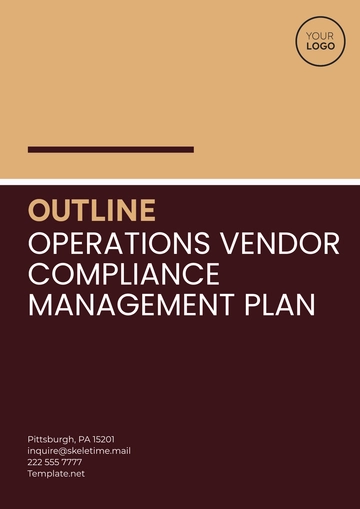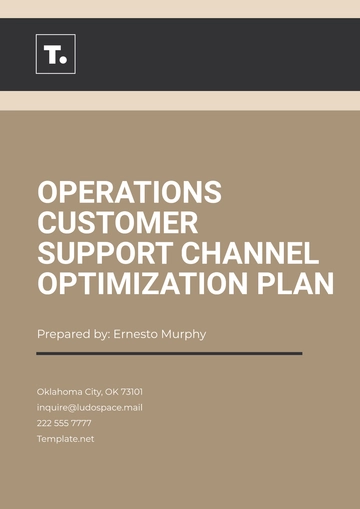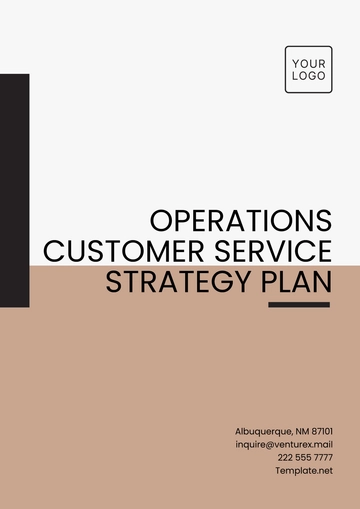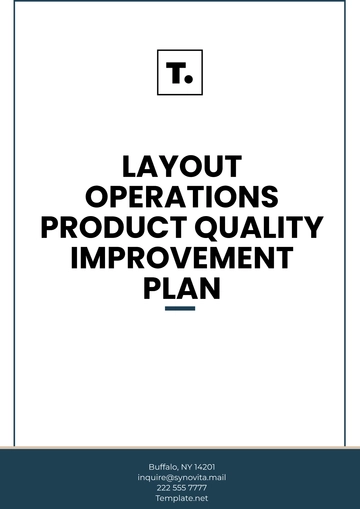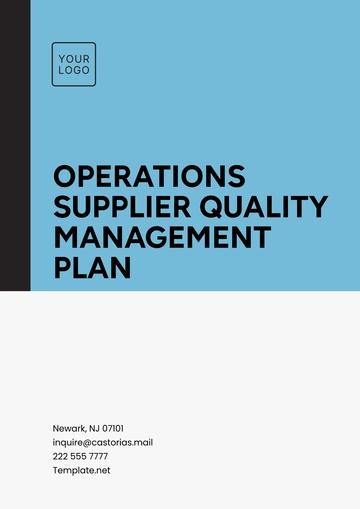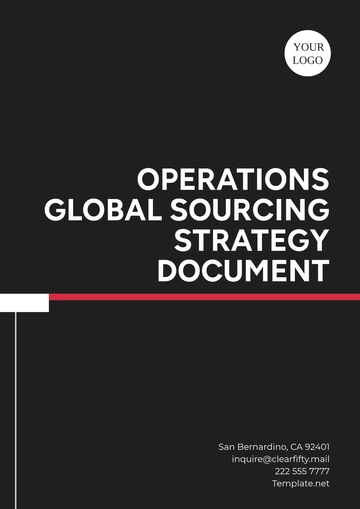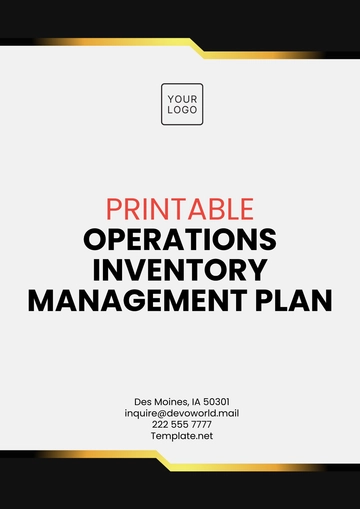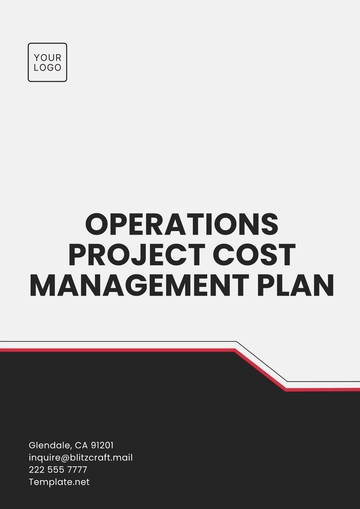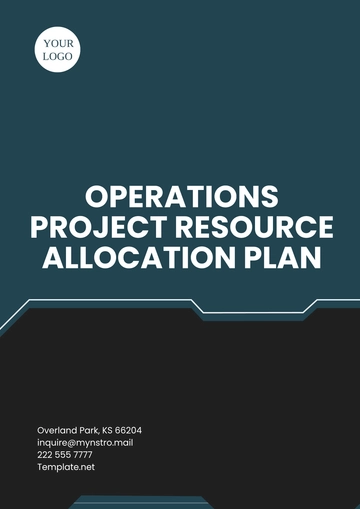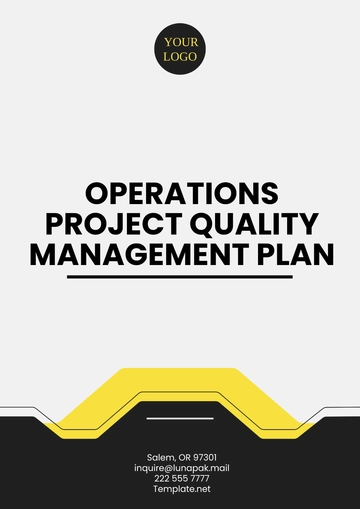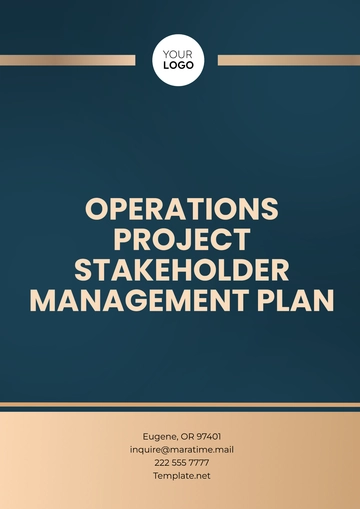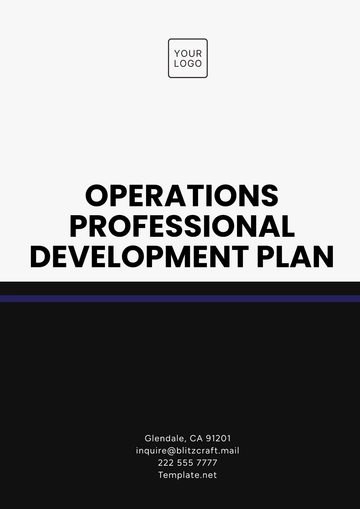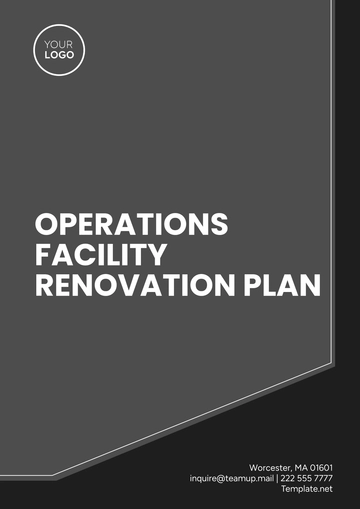Operations Team Efficiency Improvement Plan
Prepared By: | [Your Name] |
Company: | [Your Company Name] |
Date: | [Date] |
Introduction
This Operations Team Efficiency Improvement Plan aims to streamline processes, enhance team productivity, and reduce costs by optimizing key operational areas. It focuses on improving communication, workflow management, and performance monitoring to ensure that the team delivers high-quality results in a timely and cost-effective manner. The plan outlines specific strategies, timelines, and performance indicators to track progress.
Objectives
Increase productivity by eliminating inefficiencies and streamlining workflows.
Reduce operational costs without sacrificing quality or service.
Enhance communication across the operations team and with other departments.
Implement performance metrics to track improvements and ensure continuous enhancement.
Foster team collaboration through targeted training and resource allocation.
Key Strategies for Improvement
1. Streamline Workflow and Process Automation
Action Steps:
Identify key processes that can be automated or improved with software solutions.
Implement automation tools to reduce manual tasks, focusing on repetitive processes such as data entry, reporting, or inventory management.
Timeline: 3 months for initial analysis and pilot implementation.
Resources Required: Investment in automation software, and training for team members.
Performance Indicator: Reduction in manual task time by 30%.
2. Enhance Communication and Collaboration
Action Steps:
Establish regular team meetings to review progress and align priorities.
Adopt collaboration tools (e.g., Slack, Microsoft Teams) to improve cross-team communication.
Create a centralized communication hub for all project-related updates and documents.
Timeline: 1 month for tool selection and setup, ongoing for meetings and collaboration.
Resources Required: Subscription to communication platforms, and staff training.
Performance Indicator: Increased team engagement and a 25% reduction in communication delays.
3. Improve Resource Allocation and Utilization
Action Steps:
Assess current resource allocation across tasks to identify areas of overuse or underuse.
Adjust workloads and reassign tasks based on team members' strengths and skillsets.
Introduce a resource management system to track utilization in real-time.
Timeline: 2 months for initial assessment and system implementation.
Resources Required: Resource management software, consultation with team leads.
Performance Indicator: Increased resource utilization rate by 20%.
4. Cost Reduction and Efficiency Measures
Action Steps:
Perform a thorough analysis of operational costs, focusing on supply chain, staffing, and overheads.
Identify opportunities for cost-saving through bulk purchasing, renegotiating vendor contracts, or streamlining operational processes.
Implement energy-saving initiatives or other sustainability measures to reduce operational costs.
Timeline: 6 months for comprehensive analysis and implementation.
Resources Required: Access to financial data, collaboration with finance and procurement teams.
Performance Indicator: Reduction in operational costs by 15%.
5. Performance Monitoring and Continuous Improvement
Action Steps:
Develop key performance indicators (KPIs) to measure team efficiency, quality, and timeliness of tasks.
Implement regular performance reviews and feedback sessions to identify areas for improvement.
Set up a system for continuous improvement, encouraging team members to propose ideas for better efficiency.
Timeline: 1 month to develop KPIs, ongoing for reviews.
Resources Required: Performance management software, and training for managers.
Performance Indicator: Improvement in team performance scores by 10%.
Timeline
Action Step | Start Date | End Date | Responsible Parties |
|---|
Streamline Workflow and Process Automation | Month 1 | Month 3 | Operations Manager, IT Team |
Enhance Communication and Collaboration | Month 1 | Ongoing | Operations Team, HR |
Improve Resource Allocation and Utilization | Month 1 | Month 2 | Operations Manager, Team Leads |
Cost Reduction and Efficiency Measures | Month 1 | Month 6 | Finance, Procurement, Operations |
Performance Monitoring and Continuous Improvement | Month 1 | Ongoing | Operations Manager, Team Leads |
Resources Required
Software Tools: Automation software, communication platforms, resource management tools, performance management software.
Personnel: IT team, team leads, finance and procurement departments, external consultants if necessary.
Training: Staff training on new tools, workflow processes, and performance evaluation techniques.
Performance Monitoring
To track the effectiveness of the plan, the following key performance indicators (KPIs) will be monitored:
Process Efficiency: Reduction in task time for automated processes.
Communication Effectiveness: Response times and team engagement levels.
Resource Utilization: Percentage of optimal resource allocation.
Cost Savings: Reduction in operational costs and expenses.
Team Performance: Improvement in productivity and quality, measured through regular reviews.
Conclusion
The Operations Team Efficiency Improvement Plan is designed to optimize the team's performance and align its operations with the organization's overall strategic goals. By implementing process automation, enhancing communication, improving resource allocation, reducing costs, and establishing a robust performance monitoring system, the plan will foster continuous improvement and ensure the operations team contributes effectively to the organization’s success. Regular reviews and updates will be conducted to ensure ongoing alignment with objectives and adapt to any changes in the operational landscape.
Plan Templates @ Template.net
